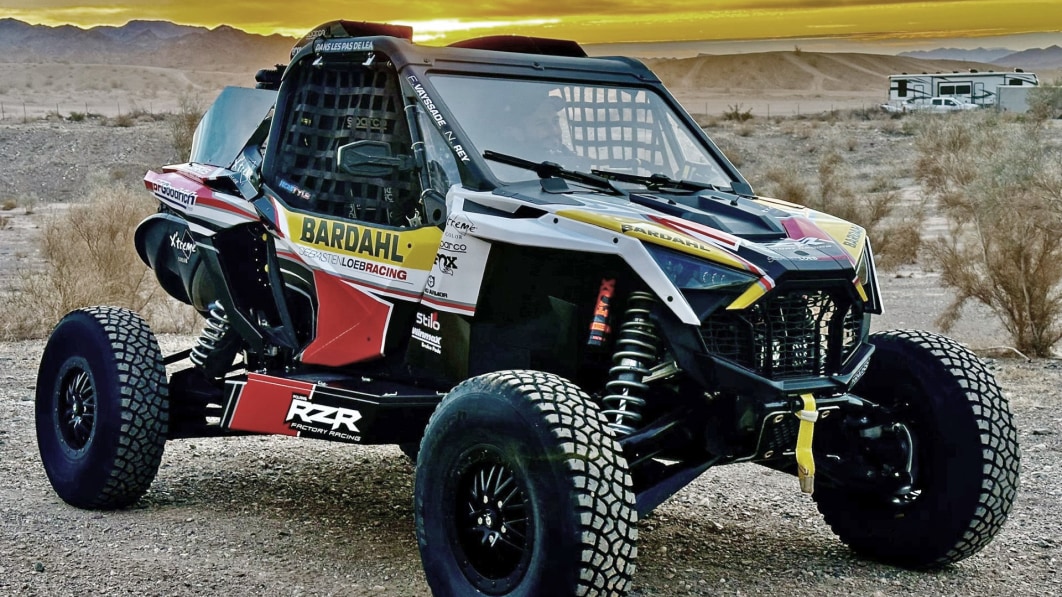The official entry list for the 2024 Dakar Rally tallies a capacity field of 199 starters in six main categories: Ultimate (70), Stock (3), Challenger (43), SSV (36), and the biggest boys, Trucks (47). This group doesn’t count the 146 motorcycles and quads that will also be cutting up the dunes during a prologue and 12 stages running from January 5-19. Ford Performance is entering the race with a re-engineered version of the previous-generation Ranger in the Ultimate class, this year a learning effort to get ready for a full assault in 2025 with a specially prepped Ranger Raptor. The Challenger and SSV classes are both for so-called Lightweight Vehicles that start with side-by-sides (SXS), but Challenger is for specialist prototype builds that are a step down from Ultimate and Stock rigs, the SSV class is for production-based vehicles. Polaris is going to be there in the SSV field with two RZR Pro R Factory rigs campaigned by race partner Sebastien Loeb Racing (SLR).
Polaris launched a factory racing team and the RZR Pro R Factory in March of this year, the newest RZR the first factory-designed SXS for winning races — a Porsche 911 GT3 RS for the dirt. In its initial season, the two-seater won its Pro UTV Open class at the San Felipe 250, Baja 400, Baja 500, and Baja 1000, thereby sweeping the SCORE Pro UTV Open Class Championship.
Dakar’s not merely a different animal, it’s a vicious and brutal one. The race is 4,903 miles long including the public roads and trails used to reach the timed special stages; the timed stages total 2,937 miles — a few dozen miles short of driving from Boston to Los Angeles. Stages 5 and 6 are 451.7 miles apiece. Stage 7 is longer. Competitors have to fix their own vehicles on some stages, and usually only get a couple hours to do it. If competitors break down when team assistance is allowed, they have to wait in the Saudi Arabian desert for the mechanics to show — a fate that only awaits riders and drivers with in-stage support, which isn’t all of them. So Polaris engineers tweaked the RZR Pro R Factory for the regulations and task, adding weight to meet the minimum; building an enclosed cab with heated windshield, wipers and washer, and an in-cab blower kit; improving visibility and sight lines, and adding storage for tools and spare parts.
In addition to SLR’s two rigs, the Xtremplus team has two more signed up, the TH-Trucks team fielding three, making seven RZR Pro R Factory rigs for the race.
The Dakar Rally added a category for SXS in 2017. Leandro Torres won the inaugural year in a Polaris RZR 1000 XP. In the six years since, six different drivers have won the category, all of them driving a Can-Am Maverick X3, last year’s winner a race rookie. There isn’t much more Polaris could do to get back on the top step than create a factory-engineered SXS and partner with Sebastien Loeb’s race team. In less than two weeks, you can bet things are going to get dirty and personal.
Related Video


